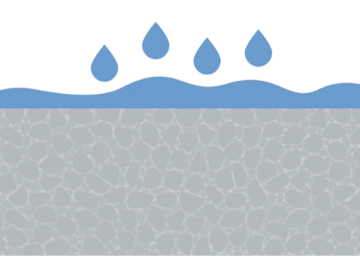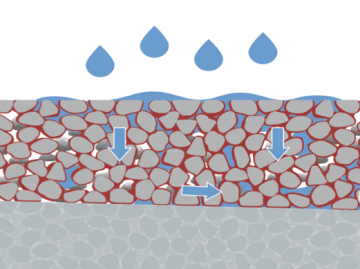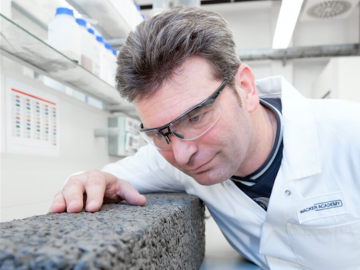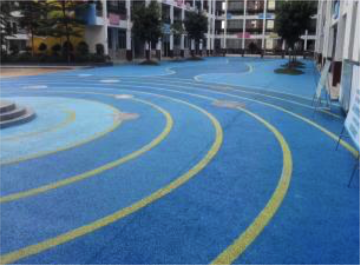
The Secret of “Sponge Cities”
Pervious concrete is actually nothing new. In fact it is so old that it had been read its last rites in Europe. Too unstable, not strong enough, not frost resistant enough. But global warming and new generations of binders have given pervious concrete a new lease of life - in China.
China has been booming for years, as ever more people have migrated to the cities. Skyscrapers are popping out of the ground like mushrooms. But the economic success has come with a price tag. As impervious ground surfaces have been laid, large cities, like Fuzhou, have regularly report flooding in the typhoon season.
The government has recognized the problem. Since 2015, it has turned 30 municipalities into “sponge cities”. The term speaks for itself. the ground is to be made pervious again, and the natural water cycle restored. The initiative centers on a new old construction material: pervious concrete Old, because great hopes had been set on pervious concrete in the 1970s. However, its strength was also its weakness. Though water could drain away through the pores, the concrete formulations at that time were not resistant enough. As a result, the material could not withstand traffic and cracked and deformed over time.

Conventional Hardened Concrete
Conventional hardened concrete cannot absorb water. After heavy rain, it stays on the surface, resulting in aquaplaning and flooding.

Pervious Concrete
Porous concrete consists to 15 to 20% of pores. The water can flow through the concrete and drains off at the sides due to the road slope. The addition of the polymeric binder ETONIS® strengthens the bond between concrete and aggregate stones. This leads to high mechanical strength. Construction physicists talk of significantly increased compressive-flexural and tensile strength. In regions subject to frost, the polymer modification improves the frost/road-salt resistance.
A New Generation of Pervious Concrete

Construction chemistry has progressed by leaps and bounds since the early years. Now it is possible to produce pervious concrete with high mechanical strength. This is because new polymer binders are available to add to the concrete. WACKER is one of a few manufacturers in the world to produce such binders in high quality. They ensure that the aggregate stones are no longer held together solely by the cement but additionally by polymer bridges. This gives the material an unprecedented stability.

Schoolyard of polymer-modified concrete in Nanjing, one of 30 sponge cities
A great deal of concrete has passed through the mixers since the start of the sponge city initiative in China. Porous concrete, which allows water to drain through, has become a key weapon in the battle against flooding. WACKER has developed an additive for this pervious concrete, which prevents it from being attacked by the impurities dissolved in the water.
To store the stormwater temporarily, the planners created flood and infiltration areas , e.g. In the form of inner-city lakes and green spaces. And more green space within cities also offers another advantage: paved surfaces cause metropolitan areas to heat up dramatically. Green rooftops and parks, on the other hand, do not get very hot. What is more, when water absorbed by the green surface evaporates, it cools the surrounding area as well.
Concrete to Combat Water Shortage
The new generation of pervious concrete could also help solve another urgent problem faced by many Chinese cities, namely water shortage. Above all in the Beijing mega-metropolis. This is one of the most arid cities in the world. The municipality has been tapping groundwater basins for decades to supply the populace. As a result, Beijing is sinking. At the same time, torrential rainfall in fall repeatedly results in severe flooding. That is one reason why the sponge city planners announced their goal of providing green spaces to capture or absorb 70 percent of stormwater in the future. Porous concrete plays an important role in this cycle. In combination with drainage systems, it allows municipalities to store stormwater and reuse it, for example for watering gardens and parks. Treating it for consumption as drinking water has even been discussed. But before the vision of sponge cities in Chinas becomes reality, it will be necessary to lay many cubic meters of pervious concrete. So the best days still lie ahead of this new old construction material.
Are you interested in our ETONIS® products?
ETONIS® modifiers extend the life of concrete used in road construction, helping reduce infrastructure costs.
More about ETONIS®


